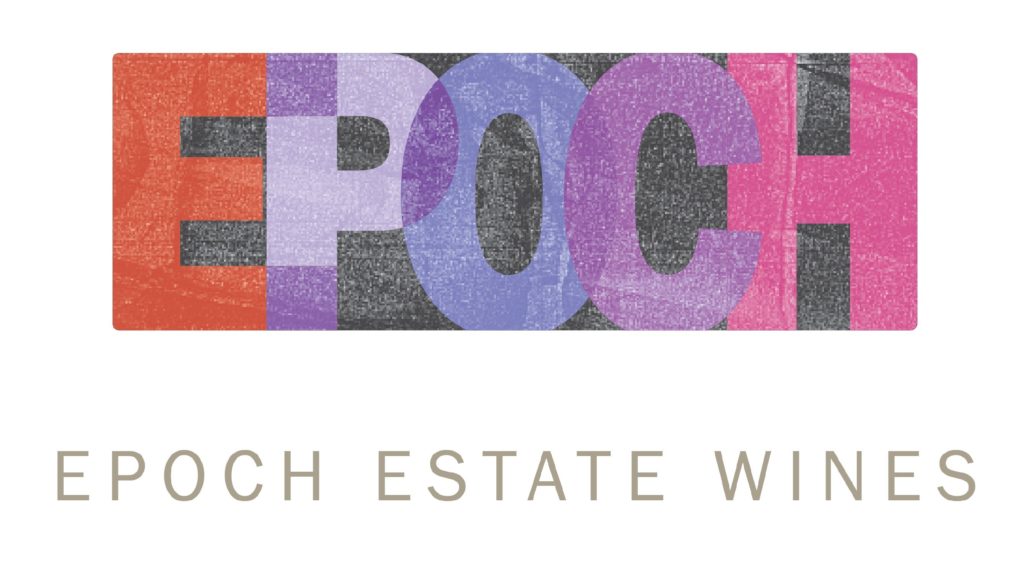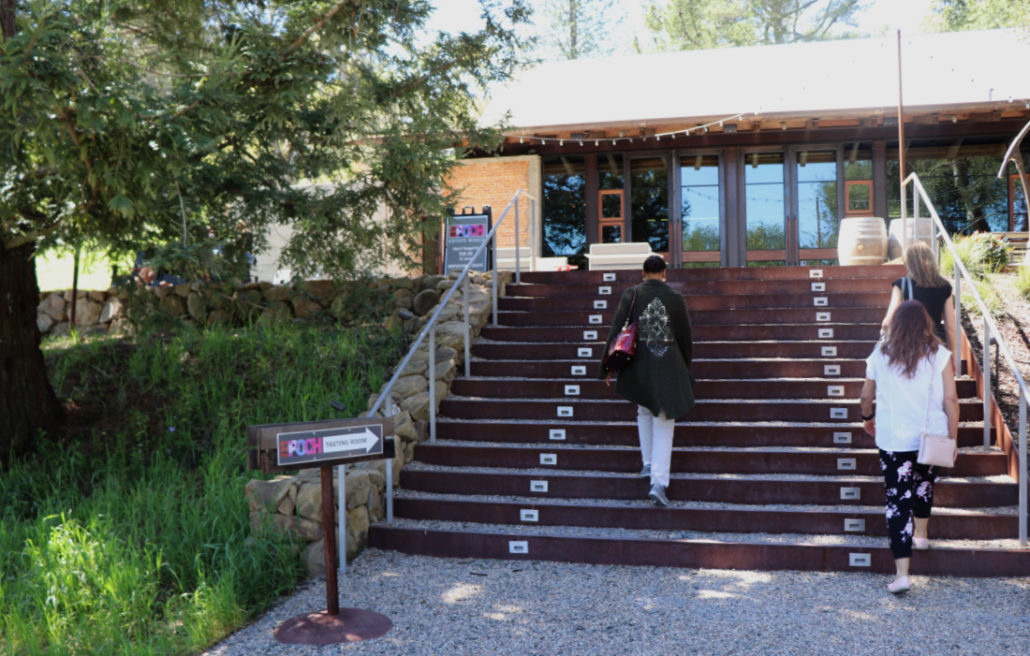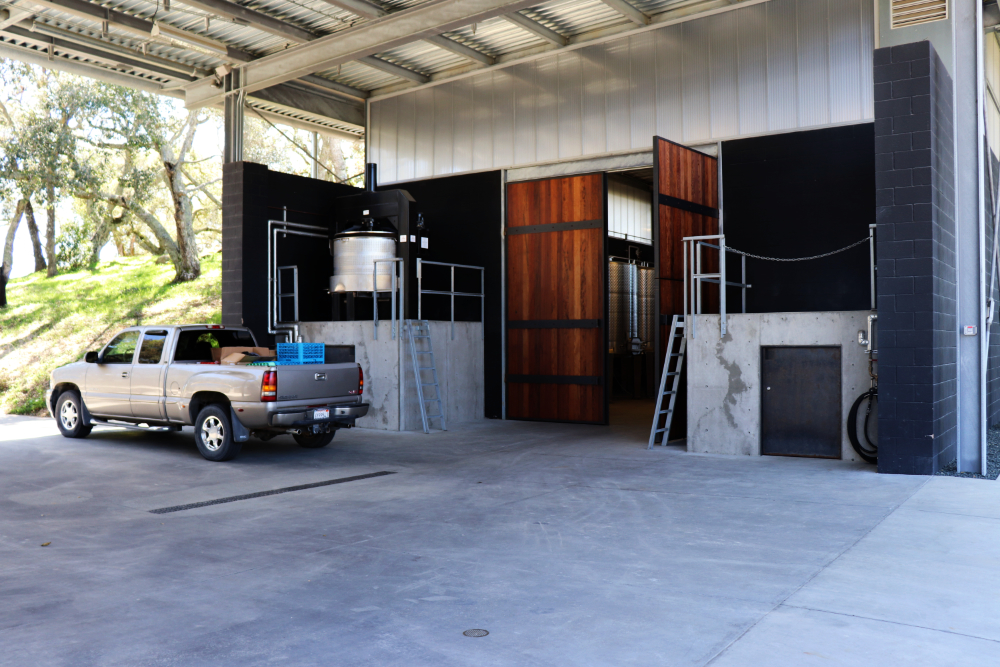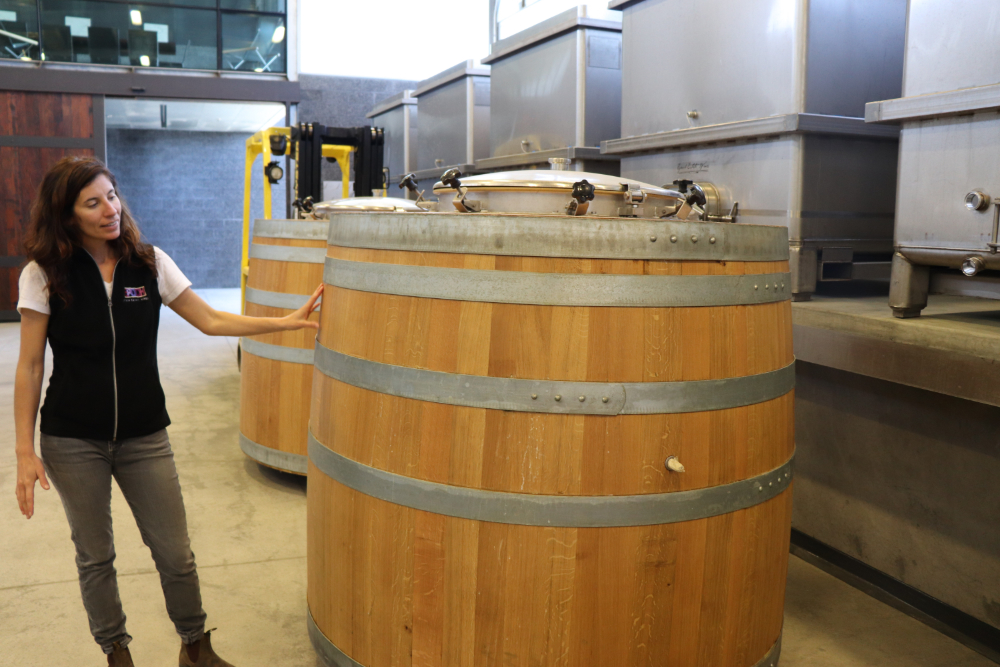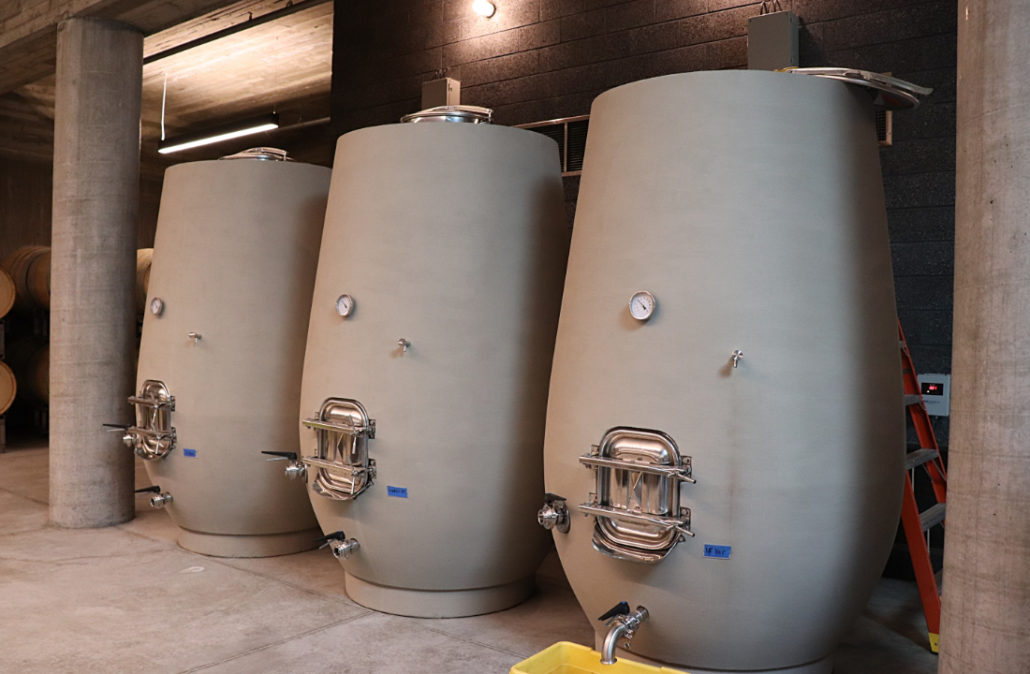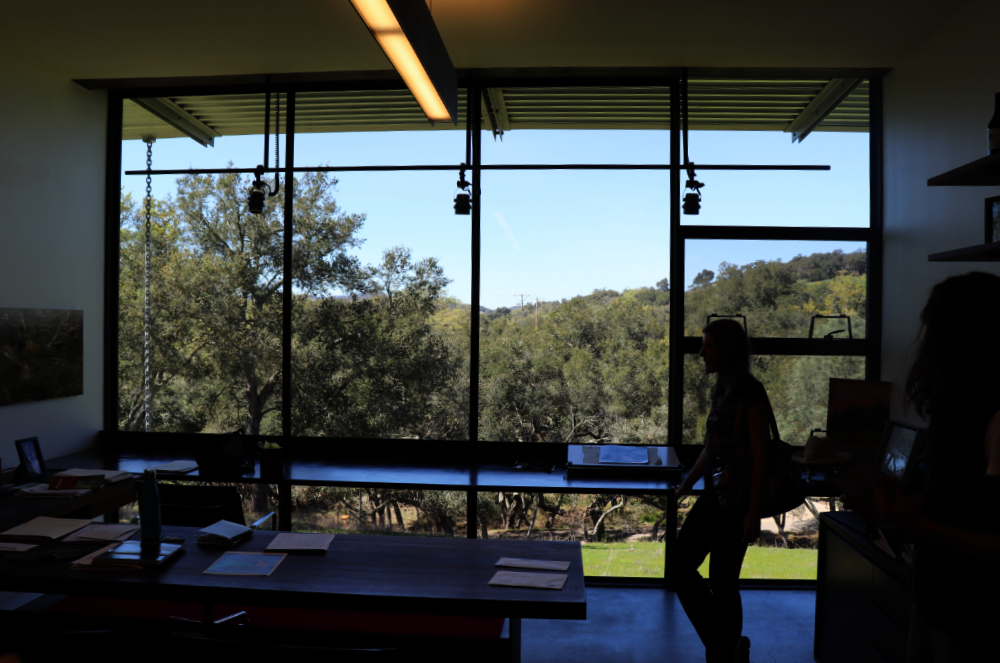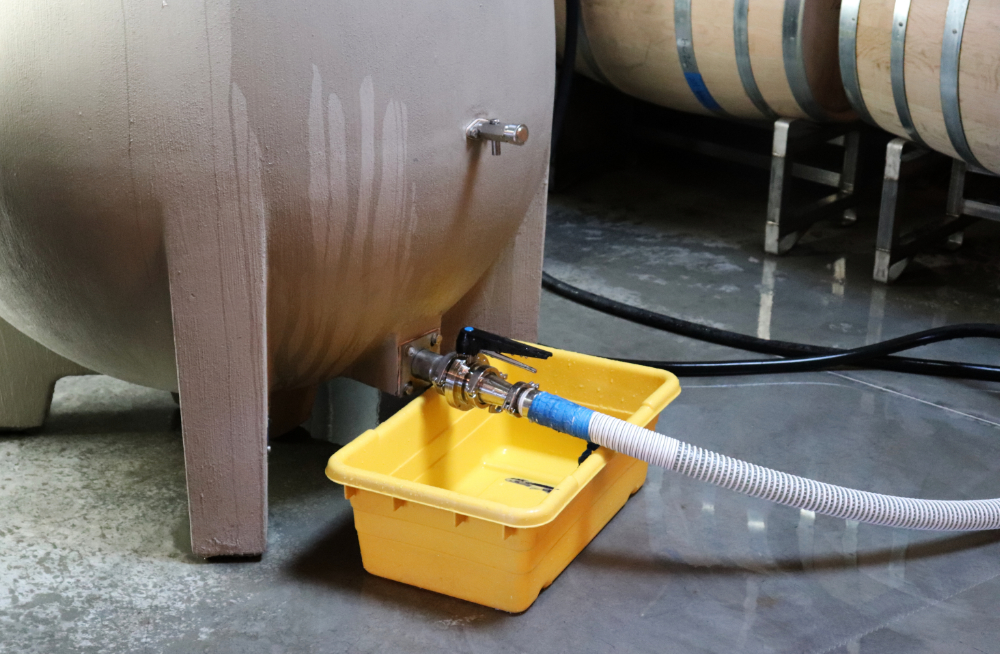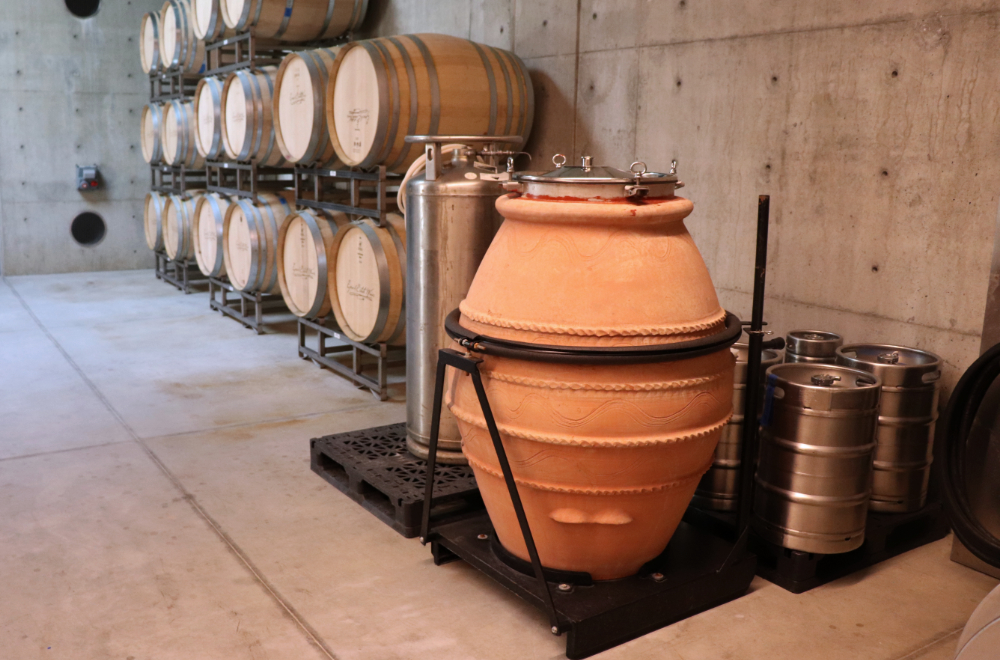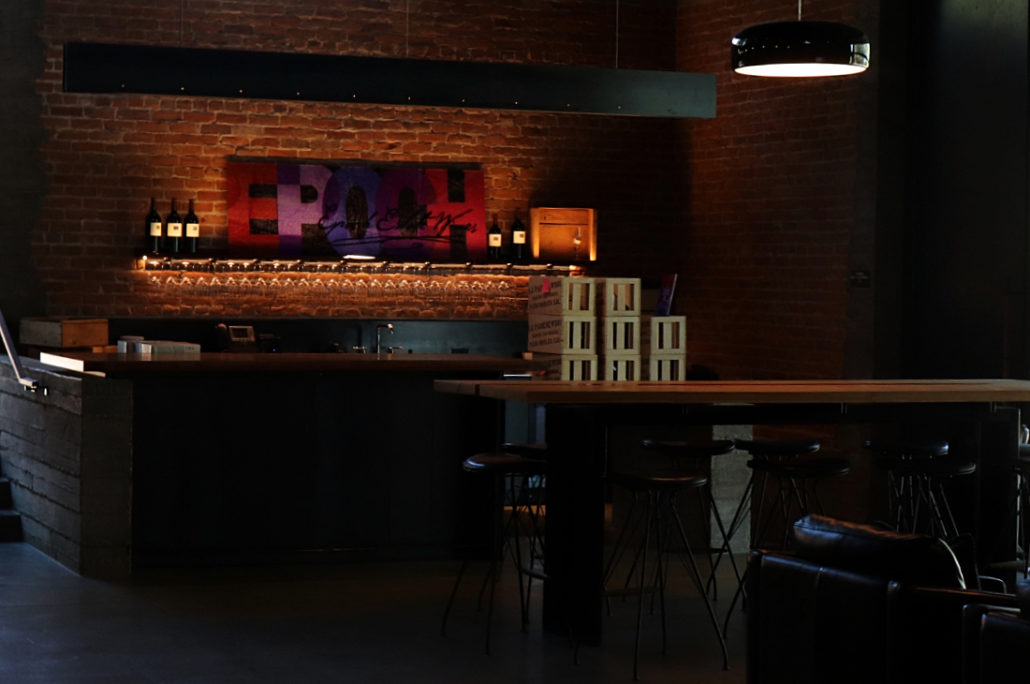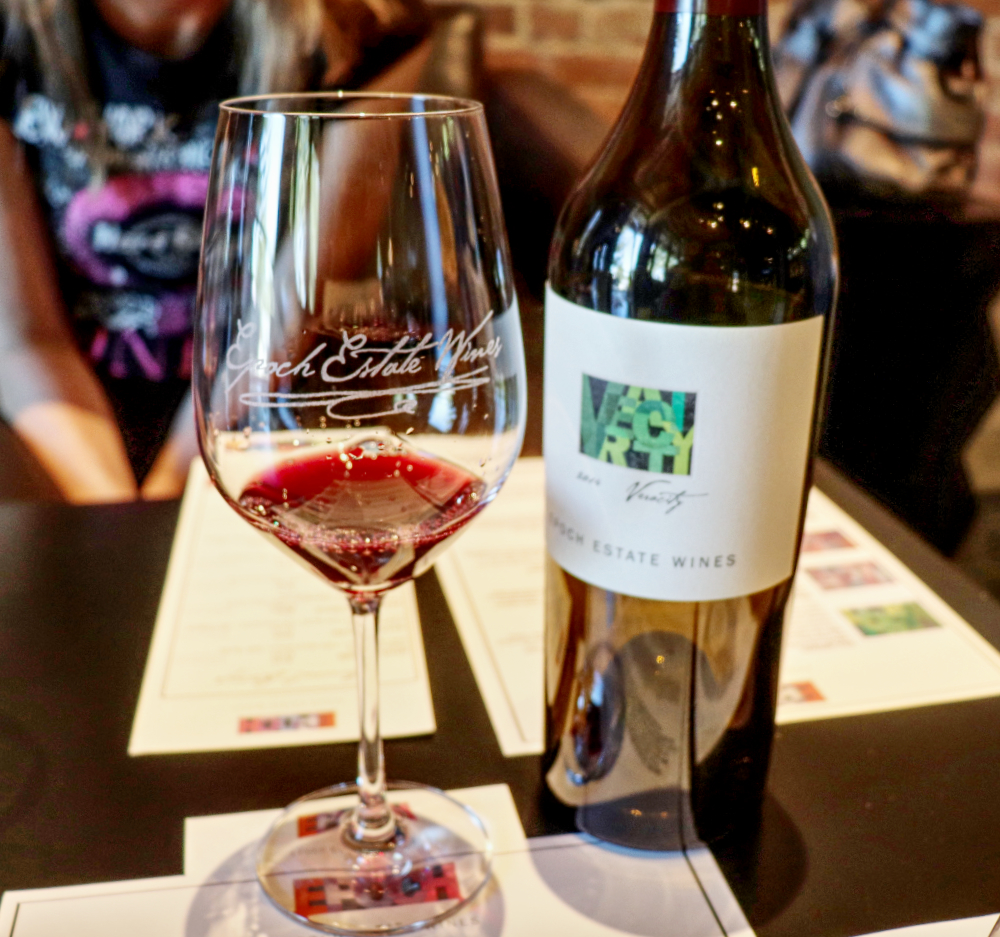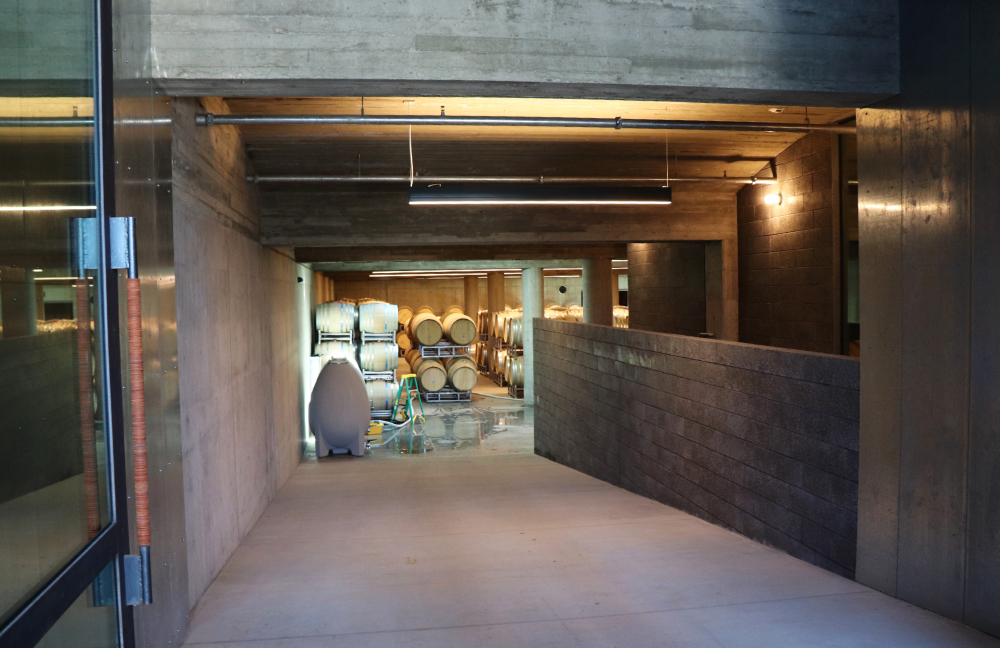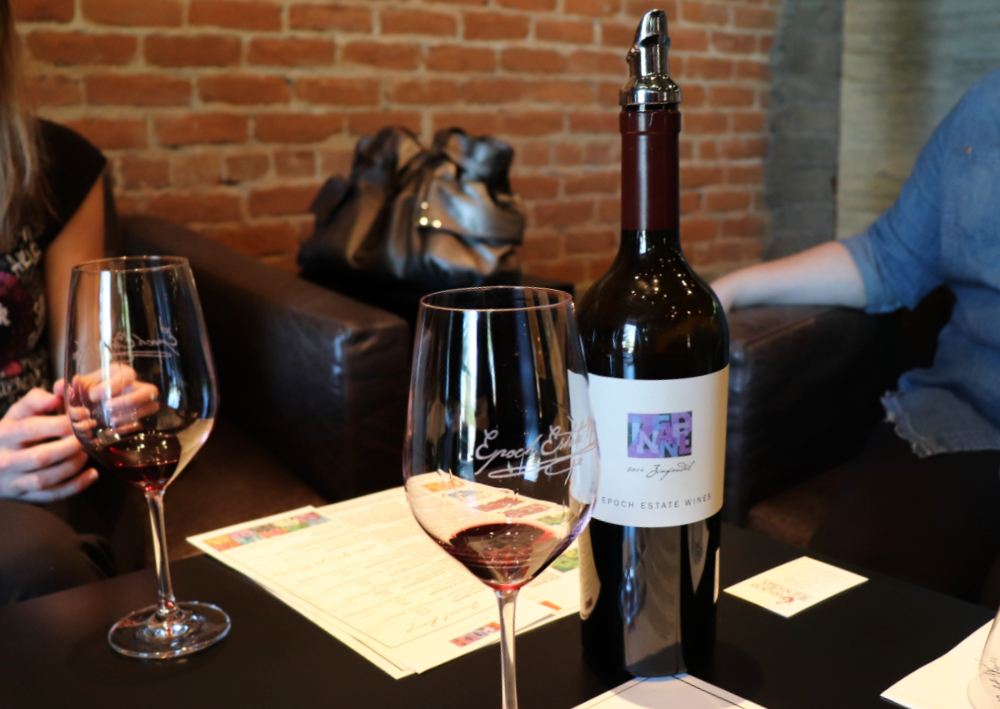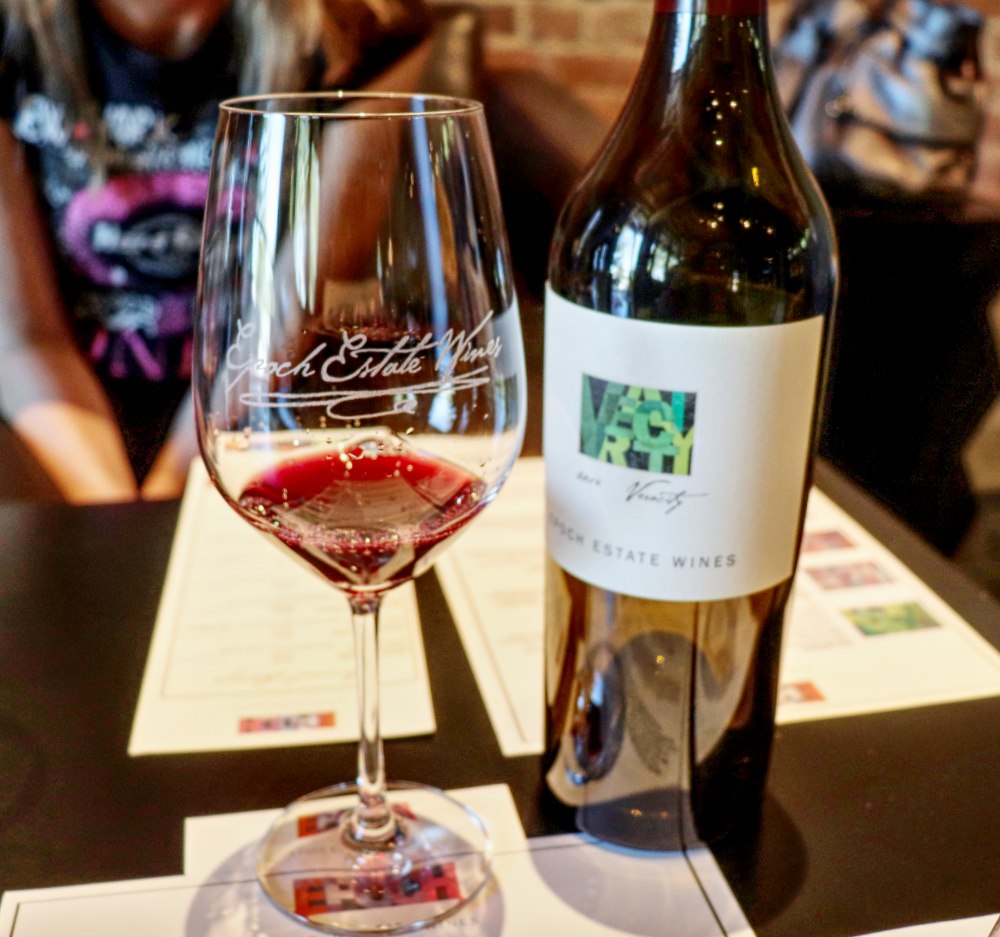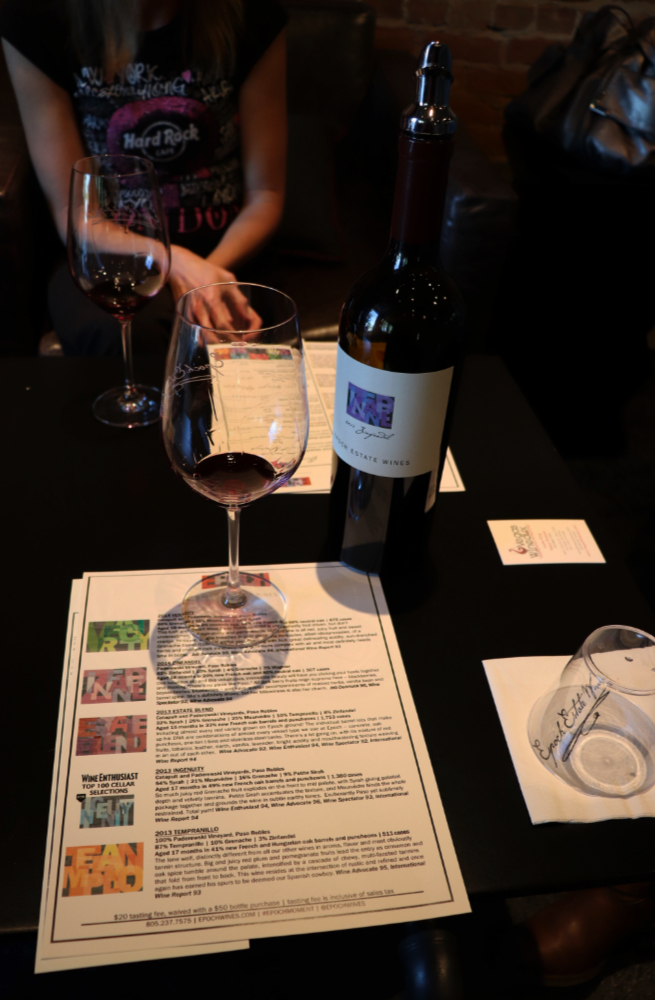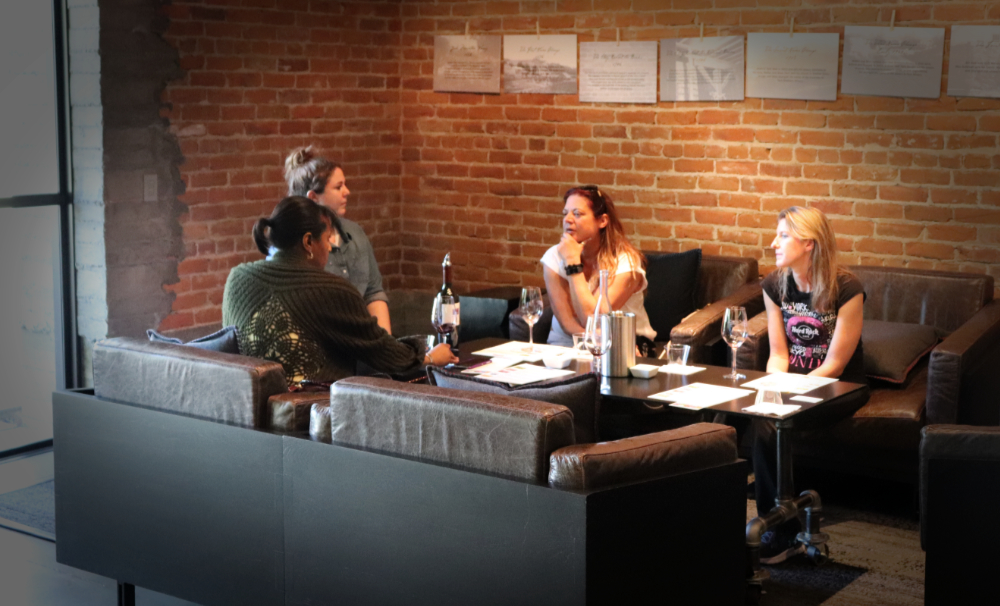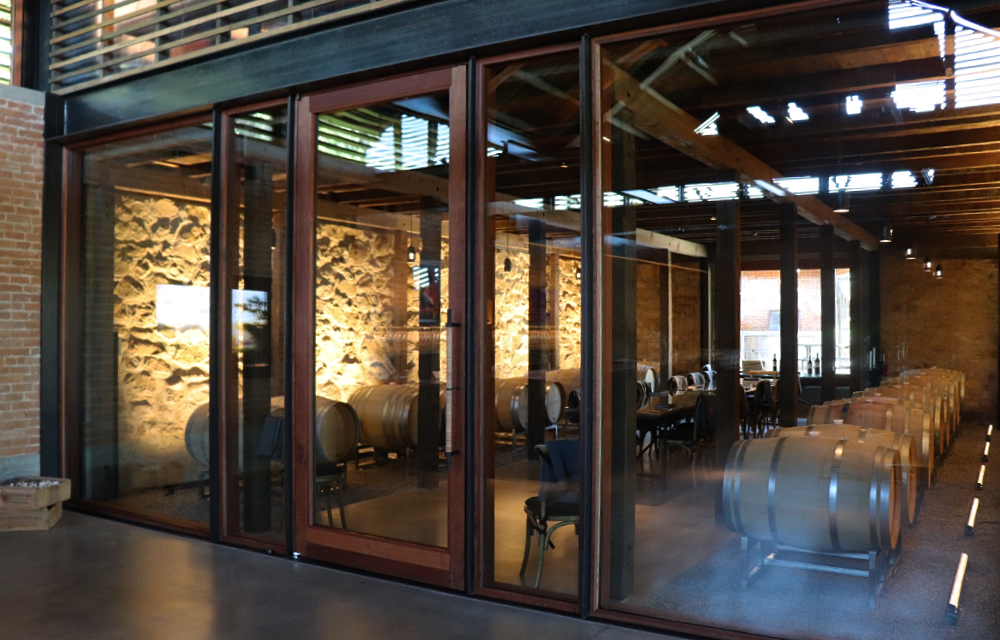The Backstory
Nearly four years ago I attended the Wine Bloggers Conference in Santa Barbara, and we had an educational side trip to Paso Robles. It wasn’t the visit to Paso that made an impact, but the instructional tasting at Bridlewood Estate Winery in Santa Ynez. We were in one of the large rooms (barrel room, maybe? I can’t recall), sitting at conference-style tables, listening to the talking heads on the panel speaking about their foods, farms, vineyards, etc. While we were enjoying the presentation and the DELICIOUS food, Chardonnay was being poured.

All of the wine bloggers were listening intently, taking notes, and sipping the wine. Almost as a single entity, we stopped listening and looked into the glass of Chardonnay. Instead of the oaked wine we had come to expect, this wine was crisp, nuanced, fruit-forward, and yet had amazing texture, minerality, and mouthfeel. Youthful Old World, perhaps? There was no detectable oak on the nose or palate, but the mouthfeel felt like oak.
In a word, it was delicious. What was this? Because the panel realized that they had lost us, they let us know that this Chardonnay had been fermented and aged in concrete eggs.
In what?
And that, my dears, is what sparked an interest that continues to this day. Until you’ve tasted a wine that’s made using time-proven methods – processing wine in concrete is not new; just ask the ancient Romans – you will deprive yourself of incredible wine experiences.
Epoch’s Winemaker

Jordan Fiorentini has been making wines for 20 years, nearly nine of it for Epoch. Apparently, she started at the age of ten. She has worked in European wineries and was very focused on Italian wines. As you may be able to tell from her surname, her husband is Italian. She worked as a winemaker for Chalk Hill Winery before the winery was purchased by Foley.
She was interested in concrete, especially since it’s a historical wine processing material. After starting at Epoch, she purchased four concrete eggs to start.
History of Epoch
Bill & Liz Armstrong are the owners, and they started Epoch in 2004. Both geologists, they began making wines with a special eye on the terroir. “Epoch,” by the way, is a geologic period of time. it is pronounced “Epic” in American. The terroir, in this case, was using a combination of dry farming, biodynamic, sustainable, and organic farming practices, combining animal agriculture (sheep eat the weeds), and recycling the grape skins that are composted.

They currently have three vineyards, two of which are in the Willow Creek District appellation: Paderewski and Catapult. The York Mountain vineyard is located, unsurprisingly, in York Mountain.
Named after Polish composer, Ignacy Jan Paderewski, the Paderewski vineyard is one of those located in Willow Creek, which, as I discovered, is becoming one of the premier regions for rich reds. He needed to take some time because of a medical issue with his hands and went to Paso Robles to enjoy the hot springs. He eventually purchased thousands of acres throughout the Central Coast and planted Zinfandel grape vines, along with other produce.
Paderewski has been credited for popularizing Zinfandel, and as the namesake of Epoch’s vineyard, honored for being one of the early pioneers of the Paso Robles wine industry.
Why concrete?

Concrete and clay have been used for millennia for making wine. Oak came along later, and stainless steel wasn’t used until the mid-20th century since it hadn’t been invented until 1913. Until about the mid-fifties, as a general rule, wines had not been processed in stainless.
Over the last decade, winemakers have been rediscovering the qualities of concrete and clay. The complaint is that stainless adds nothing to the grape; it is linear and without taste or character. On the other hand, too much oak can make a wine feel and taste like a Louisville Slugger. No Bueno. Both methods of fermenting and aging wines are valuable and have allowed winemakers to experiment and upend classical methods. For instance, can you imagine the horror of making a Viognier without oak? How about a stainless steel fermented and aged Cabernet Sauvignon? Can it possibly taste like wine? The success of today’s wines already answers that question, so why would you use ancient methods to make wine?
Over the last decade, winemakers have been rediscovering the qualities of concrete and clay.
Jordan explained the characteristics that each material contributes to the wines. Concrete adds rustic, earthy character, preserves the pure fruit properties, and adds minerality. Terra Cotta brings an earthiness to the wine. Stainless keeps the wines pure and linear, and oak adds texture, classic French oak flavors, and layered aromas.
The birthplace of wine, Georgia in the Caucasus, was using amphorae (Terra Cotta clay vessels) 6,000 years ago. Modern winemakers, of which Epoch is a great example, are using clay and concrete again for their temperature-modulating traits as well as their ability to add that “certain something” to wines. While these materials are finding their way into New World Wines, they have been used extensively in the Old World for generations. In fact, the popularity of these materials is increasing in the Eastern European countries as well as in Italy.
Winemakers Give Clay a Close Look
Is Concrete the Way to Go?
Epoch Wines
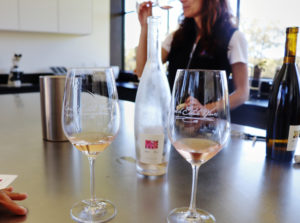
After a tour of the winery, we were ushered into the lab where Jordan shared some of the wines that explain why Epoch’s wine star is rapidly rising.
The first wine we tasted was the 2017 White. A Rhône blend of Grenache Blanc, Viognier, and a splash of Roussanne reveals a fragrant wine with a heavy, honeyed mouthfeel.
The next wine was the 2017 Rosé, another Rhône blend of Mourvedre, Grenache, and Syrah. Bone dry, it sported hints of citrus, tart cherries, apple, and clean. (Is “clean” a flavor?)
The ultimate treat was being able to share a bottle of a library wine, the 2014 “Sensibility” Grenache. Even though it was 15.6% abv, it didn’t throw the heat. The nose displayed blackberries, cherries, plums, and dust. The palate reflected the nose with medium tannins and a long, lovely finish.
Thanks, Jordan!
And then we moseyed our way to the tasting room where Cat guided us through their highly rated red wines.
2014 Veracity – 66% Grenache, 18% Mourvèdre, 16 Syrah. 94 pts., Wine Advocate; 95 pts., Jeb Dunnuck
Even though this wine has a vintage year of 2014, it’s still a baby. Very fruit forward, with surprising acidity, smooth tannins, and amazing minerality, it needs time in the glass and could probably rest for another year or so.
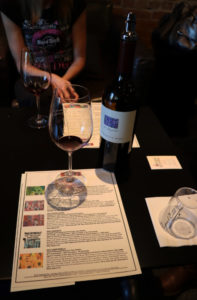
2014 Zinfandel – 83% Zinfandel, 10% Syrah, 4% Grenache, 3% Viognier. 92 pts., Wine Spectator; 94 pts., Wine Advocate; 96 pts., Jeb Dunnuck
All dark berries – boysen, blue, black, and marion – vanilla, smoke, pepper, and an addictive nose, this wine will confirm that when it comes to Zinfandel, especially with winemakers determined to step away from the overdone, Paso is hard to beat!
2013 Estate Blend – 32% Syrah, 25% Grenache, 25% Mourvedre, 10% Tempranillo, 8% Zinfandel. 92 pts., Wine Advocate; 92 pts., Wine Spectator; 94 pts. Wine Advocate.
Gorgeous! This wine has seen everything, from stainless steel to puncheons to concrete, and it’s amazing. It’s fruity without being fruit forward, with plums, leather, soft tannins, forest loam, vanilla, and food-friendly acidity. A stunner.
2013 Ingenuity – 54% Syrah, 21% Mourvèdre, 16% Grenache, 9% Petite Sirah. 94 pts., Wine Enthusiast (AND #76 on the 2017 Best of the Year list); 96 pts., Wine Advocate; 93 pts., Wine Spectator; 94 pts. International Wine Report.
Deep, dark and almost brooding, this is an explosive wine in flavor, texture, and aroma. This is an amazing blend, with the Petite Sirah adding the color and earthiness to the Rhônes. Another stunner!
2013 Tempranillo – 87% Tempranillo, 10% Grenache, 3% Zinfandel. 95 pts., Wine Advocate; 93 pts., International Wine Report
Big and juicy with surprisingly firm and chewy tannins. Lots of cherry, baking spices, vanilla, and plum. This is a must-have with paella.
The Upshot
Gorgeous winery, an all too stunning winemaker (pretty, slim, super smart, articulate, educated, artistic, and nice. Your basic nightmare), an amazing history, and most important of all, beautiful, award-winning wines.
I left there knowing that I’d be back for more. If only I can get my credit card to shut up.
Click on any photo to start the slideshow!


